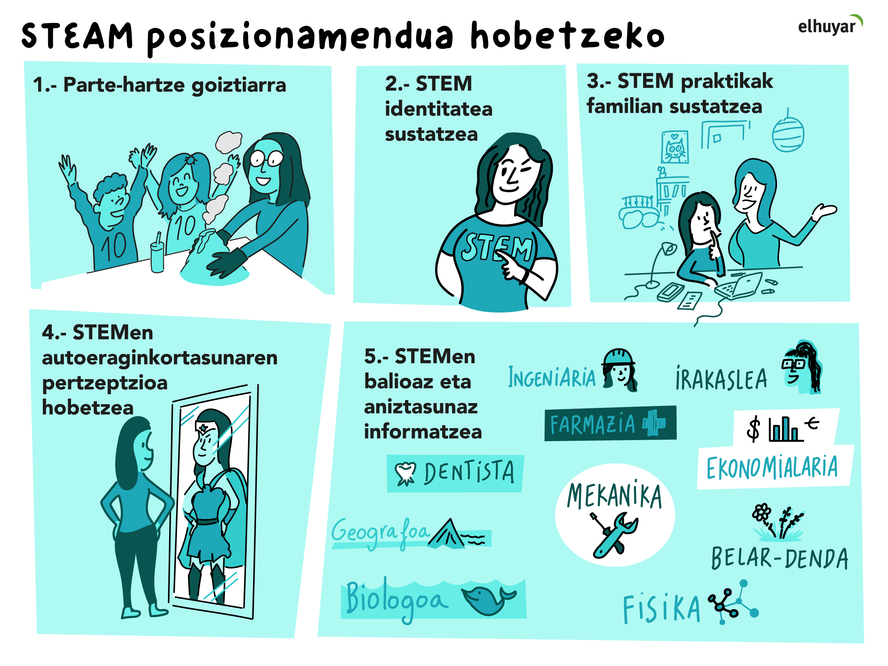Improved STEM positioning
Text created by automatic translator Elia and has not been subsequently revised by translators. Elia Elhuyar
Given these five points, we can improve the STEM positioning of young people:
- Early participation: Promote STEAM education from childhood with a focus on gender and discipline.
- Promoting STEM identity: Enhance the positive image of STEM professionals for better identification with stems. Facilitate exchange between young people and similar STEM professionals in gender, life interests, ethnicity, etc. Make visible the contribution of people who move away from stereotypes to STEM, but avoid highlighting only those cases where STEM has been a success.
- Promoting STEM practices in the family setting: providing young people with the opportunity to demonstrate their skills or successes in STEM practice so that parents and/or guardians value and value them.
- Improving the perception of STEM self-efficacy: Promote successful experiences in the practice of STEM, using different strategies in the classroom.
- Reporting on the value and diversity of STEM: Report on the added value and diversity of STEM studies. Define the contributions of stem to improve the quality of life of people.
To delve into the contents click here.






